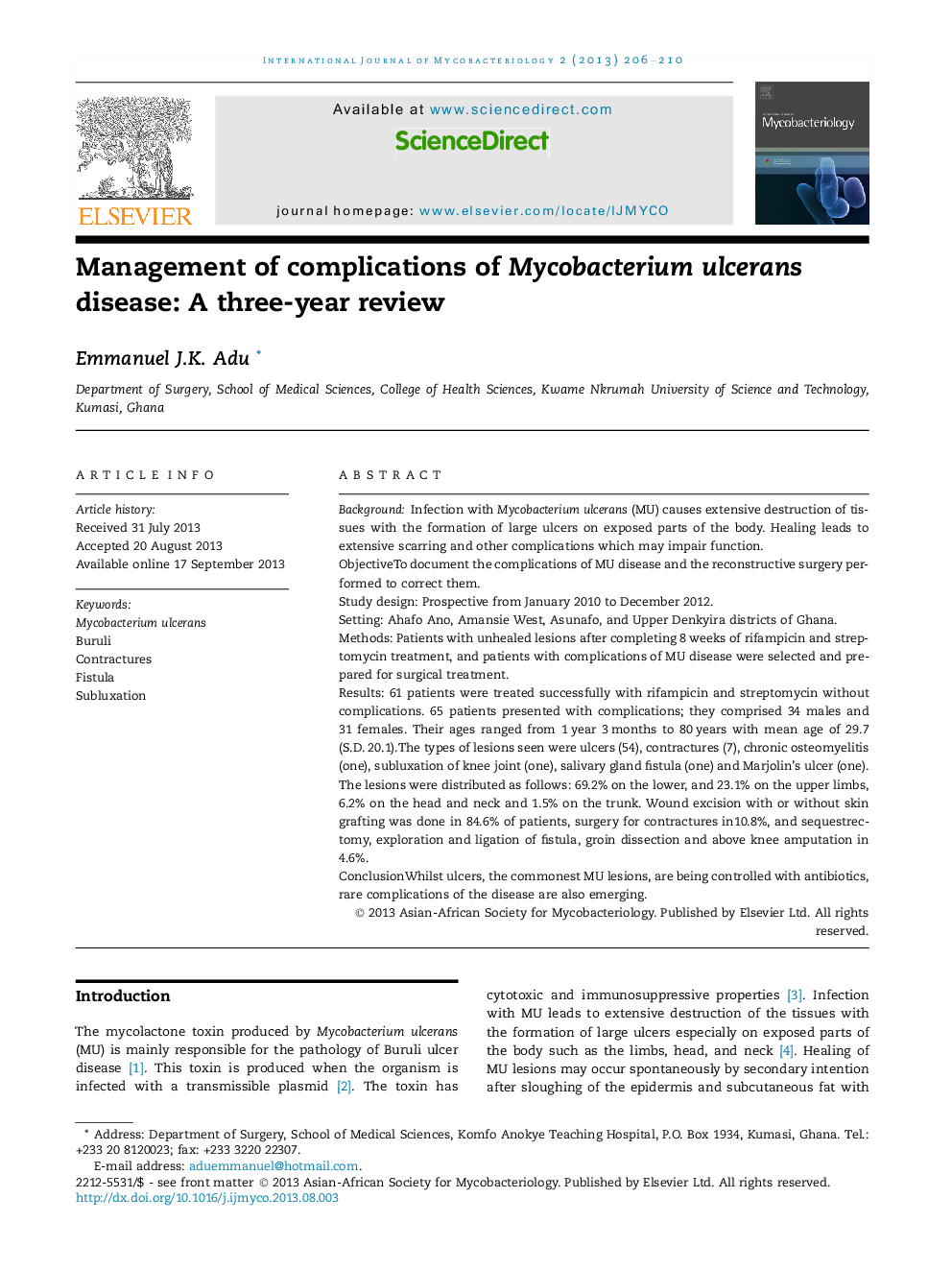| Article ID | Journal | Published Year | Pages | File Type |
|---|---|---|---|---|
| 3405154 | International Journal of Mycobacteriology | 2013 | 5 Pages |
BackgroundInfection with Mycobacterium ulcerans (MU) causes extensive destruction of tissues with the formation of large ulcers on exposed parts of the body. Healing leads to extensive scarring and other complications which may impair function.ObjectiveTo document the complications of MU disease and the reconstructive surgery performed to correct them.Study designProspective from January 2010 to December 2012.SettingAhafo Ano, Amansie West, Asunafo, and Upper Denkyira districts of Ghana.MethodsPatients with unhealed lesions after completing 8 weeks of rifampicin and streptomycin treatment, and patients with complications of MU disease were selected and prepared for surgical treatment.Results61 patients were treated successfully with rifampicin and streptomycin without complications. 65 patients presented with complications; they comprised 34 males and 31 females. Their ages ranged from 1 year 3 months to 80 years with mean age of 29.7 (S.D. 20.1).The types of lesions seen were ulcers (54), contractures (7), chronic osteomyelitis (one), subluxation of knee joint (one), salivary gland fistula (one) and Marjolin’s ulcer (one). The lesions were distributed as follows: 69.2% on the lower, and 23.1% on the upper limbs, 6.2% on the head and neck and 1.5% on the trunk. Wound excision with or without skin grafting was done in 84.6% of patients, surgery for contractures in10.8%, and sequestrectomy, exploration and ligation of fistula, groin dissection and above knee amputation in 4.6%.ConclusionWhilst ulcers, the commonest MU lesions, are being controlled with antibiotics, rare complications of the disease are also emerging.
